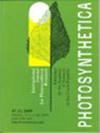可可砧木对水淹和水后胁迫的形态生理响应
IF 1.6
4区 生物学
Q2 PLANT SCIENCES
引用次数: 0
摘要
本研究调查了可可根茎对洪水和洪水后条件的反应,为气候变化导致洪水易发地区可可种植园的可持续性提供见解。我们对可可砧木进行了淹水处理60 d和淹水后30 d的研究,将PS-1319接穗嫁接到5个砧木(TSH-1188、Cepec-2002、ParĂĄ、Esfip-02、SJ-02)上。光化学性能在整个砧木中保持稳定,而淹水逐渐降低了电子传递效率。光化学损伤在7 d后出现,19 d后恶化。虽然驱油后效率有所提高,但恢复时间不足以完全恢复。Esfip-02的茎粗增加较少。TSH-1188在淹水期间茎干质量最高,淹水后根干质量和总干质量最高。SJ-02的茎干质量和淹后总干质量最低。主成分分析表明,茎和根的发育是恢复的关键。SJ-02和Esfip-02的抗淹能力和采收率较低,而TSH-1188和ParĂĄ的抗淹能力较高。本文章由计算机程序翻译,如有差异,请以英文原文为准。
Morphophysiological responses of Theobroma cacao L. rootstocks to flooding and post-flooding conditions
This study investigates how cocoa rootstocks respond to flooding and post-flooding conditions, offering insights for cocoa plantation sustainability in flood-prone areas due to climate change. We studied Theobroma cacao L. rootstocks for 60 d of flooding and 30 d post-flooding, grafting PS-1319 scions onto five rootstocks (TSH-1188, Cepec-2002, ParĂĄ, Esfip-02, SJ-02). Photochemical performance remained stable across rootstocks, while flooding progressively reduced electron transport efficiency. Photochemical damage emerged after 7 d, worsening occurred at 19 d. Although post-flooding efficiency improved, recovery time was insufficient for full restoration. Stem diameter increased less in Esfip-02. TSH-1188 had the highest stem dry mass during flooding and the most root and total dry mass during post-flooding. SJ-02 had the lowest stem dry mass and post-flooding total dry mass. Principal component analysis revealed stem and root development as a key for recovery. SJ-02 and Esfip-02 showed lower flooding tolerance and recovery, while TSH-1188 and ParĂĄ exhibited higher resilience.
求助全文
通过发布文献求助,成功后即可免费获取论文全文。
去求助
来源期刊

Photosynthetica
生物-植物科学
CiteScore
5.60
自引率
7.40%
发文量
55
审稿时长
3.8 months
期刊介绍:
Photosynthetica publishes original scientific papers and brief communications, reviews on specialized topics, book reviews and announcements and reports covering wide range of photosynthesis research or research including photosynthetic parameters of both experimental and theoretical nature and dealing with physiology, biophysics, biochemistry, molecular biology on one side and leaf optics, stress physiology and ecology of photosynthesis on the other side.
The language of journal is English (British or American). Papers should not be published or under consideration for publication elsewhere.
 求助内容:
求助内容: 应助结果提醒方式:
应助结果提醒方式:


